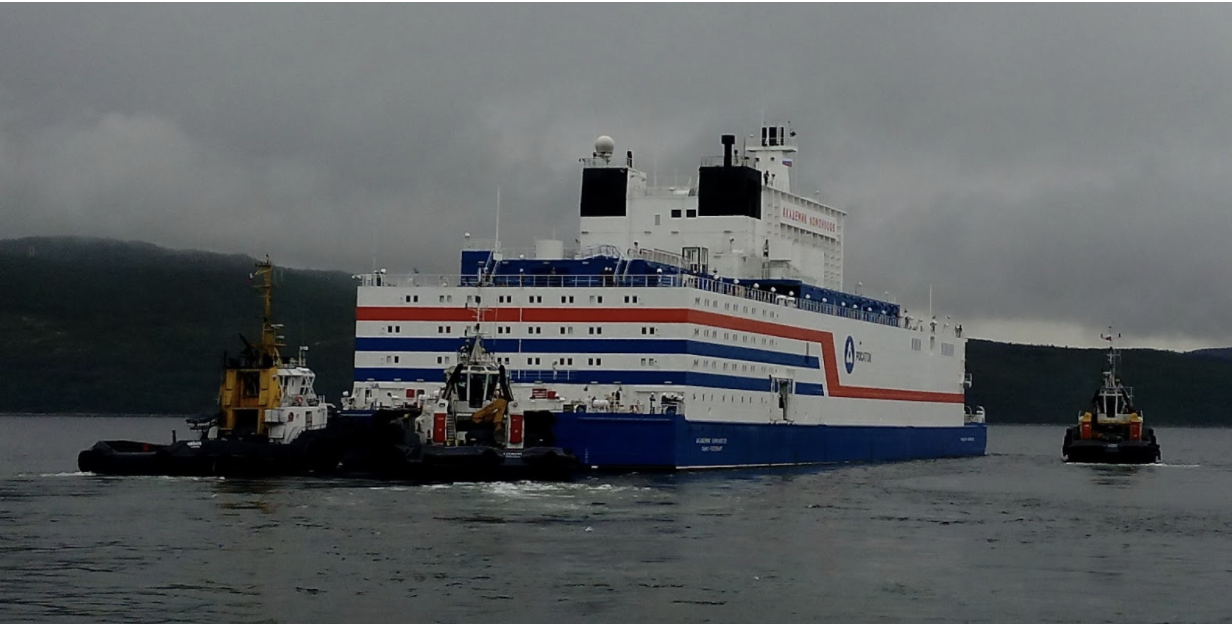Barge-Based Nuclear Plant Powers Small Russian City
The Akademik Lomonosov provides Pevek with nuclear-powered heating. (Wikimedia Commons)
The small town of Pevek in the Chukotka Autonomous Oblast of Russia has become the site of an experimental small-scale nuclear power generation system where a nuclear reactor runs on a barge just off the coast, according to the New York Times. The nuclear heating in Pevek, which was launched in November 2021, is part of Rosatom’s efforts to test a new model of residential heating for distant Russian settlements in Siberia.
Two small-scale reactors heat water and pump it to a nearby heat distribution center, from which it is pumped through pipes connected to houses in Pevek, according to the New York Times. Nuclear heat generation was initially made available for only some neighborhoods, but will now be extended for all 4,500 residents of the coastal city, according to the New York Times. The reactors help offset the effects of coal-based energy production, and they have been found to operate at safe radiation levels, according to RIA.
Pevek’s residential heating is currently provided by the Akademik Lomonosov, a barge containing small-scale nuclear reactors known as small modular reactors (SMRs), according to the International Atomic Energy Agency. Though the SMRs aboard the Akademik Lomonosov make up Russia’s eleventh active nuclear plant, the barge is the world’s northernmost reactor and the first of its kind. Future barge fleets carrying SMRs could supply heat and electricity to other settlements in the Russian north and far east, according to World Nuclear News.
Rosatom, a Russian state-owned nuclear energy company, plans to build more barge-based nuclear power plants, which will have more energy output capacity than the Akademik Lomonosov, according to Yandex. Rosatom’s efforts were supported by Russian President Vladimir Putin, who allocated 169 billion rubles ($2.3 billion) to the project, according to RBK. For Rosatom, building these barges presents an opportunity not only to supply energy to Russian cities and industrial sites, but also to export the barge systems to other countries.
Inspired by Rosatom’s project, other countries have recognized nuclear energy’s potential, particularly the small-scale energy generation model demonstrated by Rosatom in Pevek. France has announced an initiative to develop small-scale reactors, according to France24. China has undertaken similar projects modeled on Rosatom’s designs, which could potentially be used to power artificial islands, according to Futurism.
The development of floating small-scale nuclear power plants is one of the latest instances of civilian nuclear-powered fueling, the use of nuclear power for civilian applications such as heating or shipping. Other nuclear applications unique to Russia include their development of a fleet of civilian nuclear-powered icebreakers and their experimentation with heating efforts from refining weapons-grade plutonium, according to the World Nuclear Association.
Nuclear projects such as Pevek’s have environmental benefits. Although Russia’s embrace of nuclear energy helps offset its reliance on fossil fuels, the country still has a vested interest in exploiting climate change. Melting Arctic ice caps widen Russian shipping lanes, and global warming expands the arable land area, according to the New York Times. While Russian companies are making headway in the experimental use of nuclear power, many still stand to rely on fossil fuels as their primary income for the foreseeable future, according to Bloomberg.

